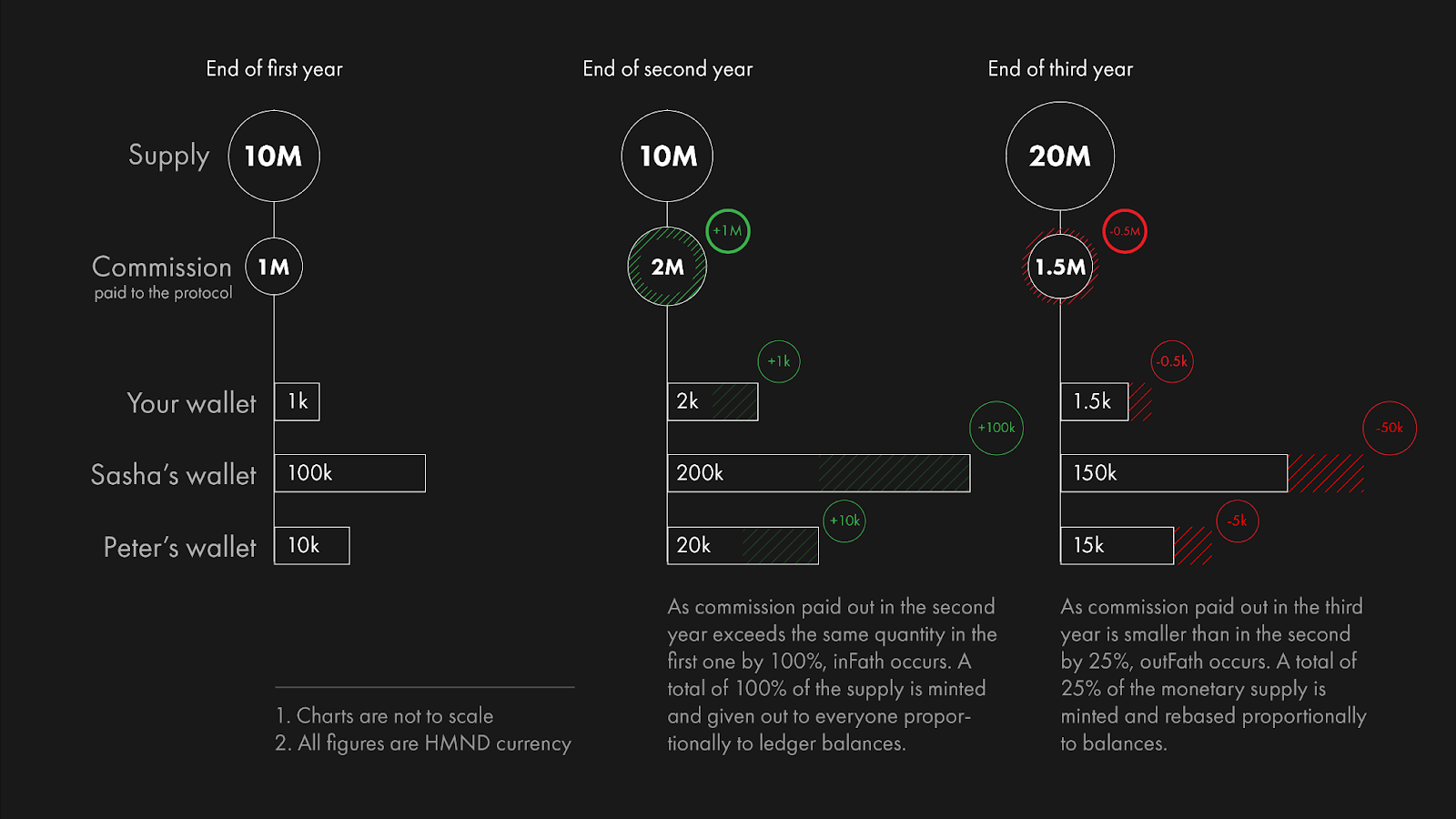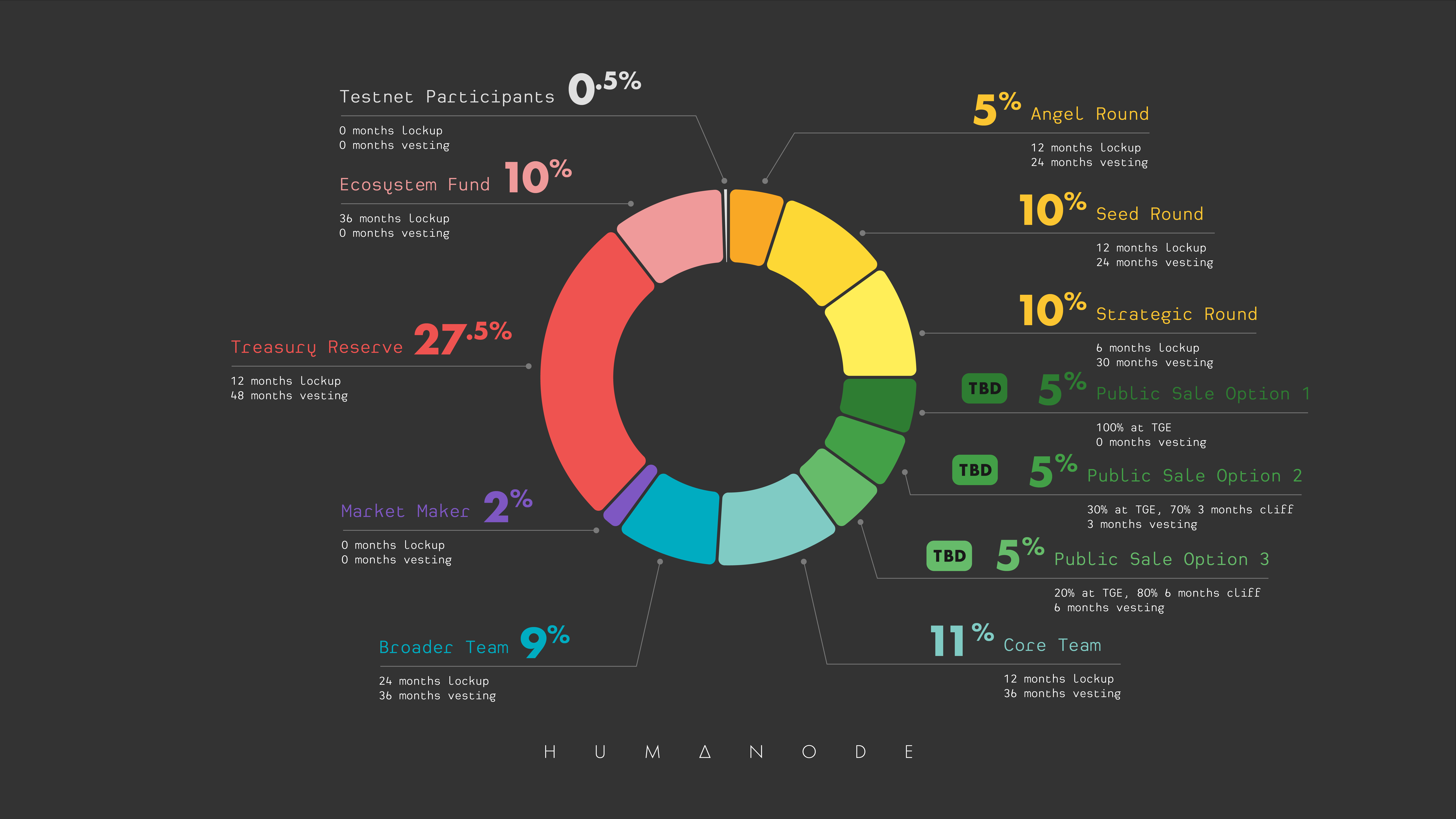One person with multiple wallet addresses is a common phenomenon in the encrypted world, and the authenticity of the account really affects the operation of the encrypted world. For some professional "wool parties", wallet addresses with hundreds or even thousands of wallets are also common.
Using the wallet address as the ID of a "person" cannot rule out the influence of false identities, false content, and false data, and it will bring potential risks of Sybil attacks to the encrypted world. The encrypted world needs a trusted identity system, a more reliable DID. The birth of Humanode is committed to solving this risk. Through biometric technology, it will truly realize "one person, one vote" and establish a more fair economic system on the chain.
secondary title
How important is "real person" certification to L1?
The current encrypted world is full of the phenomenon of "one person with multiple accounts". What problems will this bring?
The first is the issue of airdrop distribution. For ordinary users, creating accounts in batches by the Wool Party will reap a large number of airdrops, which dilutes the benefits that ordinary users can earn through airdrops. For the project side, the high-value airdrop was originally a means to attract users, but the tokens did not enter the hands of users, but became the profit of the wool party. This is a great problem for the project party.
And when we focus on the governance level, the issue becomes even more serious. The impact of this problem is far more than a simple "airdrop", and it will also contain the risk of Sybil attacks. A Sybil attack is an attempt by one person to take over a network by creating multiple identities on the same network. These identities appear to be different unique identities to other participants in the network, but behind them are all controlled by the same entity.
In the decentralized Web3 world, this may cause irreversible damage to the entire system. For example, voting governance has become a popular mechanism as DAOs have matured, but identity-based voting governance has never been possible.
At present, the "real person" authentication of Web3 adopts more authentication methods based on Web2, such as verifying Twitter accounts and Discord accounts. At the bottom, this relies on the centralized Web2 infrastructure and has certain limitations. The natives of the crypto world desperately need a crypto-native identity solution. But there are no better options on the market at present.
secondary title
How does ZK technology protect user biological information?
Humanode's biometric authentication mechanism is a unique innovation, and before that, not many L1 public chains have used this mechanism. One of the reasons behind this is the "sensitivity of biometric data".
Traditional security tools such as passwords can be replaced once lost or leaked, while human biometric data is difficult to change. This security risk also makes users afraid to use biometric products.
The development of blockchain technology can solve this problem. Humanode uses ZK proofs to verify users' biometric information. This can ensure that sensitive user data is not collected in the hands of the project party, and can verify the user's biometric information. Because the user's original information is not collected, even if a hacker attack or data leak occurs, the user's biometric information will not be leaked.
Using ZK technology, Humanode can achieve trustless verification of user data. With the use of ZK verification in DID systems, users can introduce more granular volumes into the crypto world in the form of ZK certifications or credentials that can be trustless without too many data breaches or central databases verify.
In terms of consensus mechanism, Humanode is also different. It understands and builds blockchain consensus from another perspective, that is, PoE consensus (Proof of Existence). Humanode's mechanism, as its name implies, "human" and "node", creates the first human-based digital verification layer based on biometrics. The network verifies the uniqueness and existence of users as real human beings. Every living person can create a node, and each node has a voting right in the system.
What good can this bring? This consensus mechanism can maximize the elimination of differences between people, regardless of your workload, capital, or race, religion, or gender.
Humanode believes that traditional PoW and PoS are resistant to sybil attacks based on capital, which makes their core a plutocratic system. An oligopoly of miners and validators monopolizes the market, which eventually leads to centralization. The blockchain products built around these mechanisms also make ordinary people lose their voice, and the governance of DAO becomes difficult.
Whereas in PoE’s Humanode, the validator must prove his existence and independence through private biometrics. This means everyone has an equal say in decision-making. If an attacker wants to launch a Sybil attack, he must find and convince 51% of independent humans.
This can truly achieve one person one vote. As long as they are registered in the system and exist in reality, each person's vote has the same power.
secondary title
Fath: A Fairer Economic System
Humanode brings such a vision to the encryption world: one person = one node = one vote. Use this to overcome various known issues in modern cryptoeconomics and governance. In order to realize this vision, in addition to technical efforts, the Fath mechanism is also designed as Humanode's economic system.
Fath is a monetary algorithm that distributes currency proportionally, created by the Paradigm Research Group. Fath takes its name from the word Fathom, which means after much deliberation, having a deep understanding of why things happen and aptly summarizing how that process was achieved.
The FATH hypothesis is a monetary policy and algorithm that is released in proportion to real value growth. Fath controls release based on growth. Simply put, the system compares two adjacent years to make calculations. If there is a 20% increase from this year to next year, all token holders will be issued an additional 20% of tokens based on the number of tokens you own. If there is a negative growth, say -10%, then 10% of the currency will be deducted and burned equally from each user. The system ensures that the quantity and value of the currency matches market demand. The network will distribute transaction fees equally to all validator nodes.

This algorithm can control the currency release to the amount that the value actually increases. Humanode's monetary system will be based on the Fath assumption, and adjusting the money supply according to economic growth can avoid the effect of currency depreciation. The HMND token will be the first currency based on the Fath model. After the tokens are minted, the supply of Fath will be algorithmically adjusted according to the Gross Monetary System Production (GMSP).
Gross monetary system output is a new concept proposed by the research team, which refers to the additional value created by the monetary system, that is, the economic output of goods and services sold through the network. This means that each stage of the protocol will calculate the real value creation (rVC) generated in this period, and rebalance the total amount of tokens according to the rVC.
The first rebalancing on the Humanode network will happen two years after launch. From then on, the annual rebasing operation will be applied proportionally to each wallet's balance.
The Humanode project will implement Fath as a long-term solution to mitigate long-term devaluation by prorating emissions.
As the Humanode mainnet token, the HMND token is initially limited to a total supply of 400 million, and has since been adjusted according to the Fath model.

From the point of view of distribution ratio:
5% is allocated to angel investors.
10% is allocated to seed round investors.
10% is reserved for strategic investors.
15% will be used for public sale, and there will be three different public sale rounds.
11% will be allocated to the core team under strict lock-in and authorization conditions.
9% will be allocated to a wider team joining the Humanode core after mainnet.
2% is allocated to market makers.
27.5% is allocated to the Humanode DAO treasury reserve fund.
10% goes to the Ecosystem Fund.
0.5% will be allocated to Phase 1, 2, 3 participants of the Humanode testnet.
Lock-up period: During this period, tokens will remain locked, unusable and uncirculated.
Vesting period: The vesting period refers to the time frame in which tokens can be used for claiming. Tokens will be released linearly on a block basis.
In February of this year, Humanode completed a $2 million seed round of financing led by Republic Capital, Tribe Capital, Avalanche, Wintermute, Shima Capital, Genblock Capital, GravityX Capital, AU21 and StaFi, Heslin from Supraoracles and Polygon co-founder Jaynti And individual investors such as Sandeep participated in the investment.
secondary title

1 person 1 vote 1 node
Humanode binds "people" and "addresses", which is a unique innovation that allows the encrypted world to better serve real "people". Humanode challenges the traditional model of blockchain technology, and projects like Humanode, which are at the forefront of innovation, can make us rethink our understanding of this industry.
According to the roadmap, Humanode will launch a ZK-based biometric verification test in 2023 and a one-click Humanode App in 2024.

Using a consensus mechanism based on biometric encryption, Humanode tries to achieve its goal: one person = one node = one vote, which may overcome various known problems in modern cryptoeconomics and governance.
Strong anti-Sybil attack capabilities can provide infrastructure for application construction in the encrypted world, and also open up a greater space for developers to imagine.



